If you’re looking for the best shoes for knee pain, we’ve got a few recommendations.
Knee pain is something that many people experience, but it’s something that can be treated! If your knees are giving you problems, check out some of our favorite shoes for knee pain below.
Best Shoes For Knee Pain 2019
These Are the Top Sneakers You Should Invest in if You Have Knee Pain, According to Podiatrists
Knees are just one of those body parts we don’t really appreciate until we have problems with them. Aches and pains in your knees not only hamper your movement, but they also can be a constant nuisance, considering how often we use them—walking, running, climbing stairs, even sitting and standing up. And while solving knee pain can be a difficult task, one thing that may help is wearing good shoes. That may mean putting away those strappy sandals and grabbing a pair of sneakers that your knees won’t hate you for.
What causes knee pain?
While knee pain can be caused by injury or age, there’s one culprit you may not automatically think of: your feet. “When it comes to joint pain, we love to blame it on age, but do we ever stop to think where it stems from? One of the most common areas to experience pain is our knees. Contrary to what most people think, it may not be the knees getting old, but rather the orientation of your feet,” says Dr. Stephanie Anne Lubin, Doctor of Podiatric Medicine at the Broadway Chiropractic & Wellness Center NYC.
Adds Nelya Lobkova, DPM, a board-certified podiatrist at Step Up Podiatry in New York City, knee pain, especially when the onset is a new activity, is often caused by alignment issues stemming from our foundation, the feet. “If the feet are not transferring ground reaction forces properly up the chain, alignment is thrown off, and knee concerns arise.”
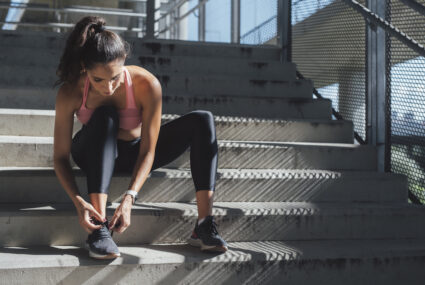
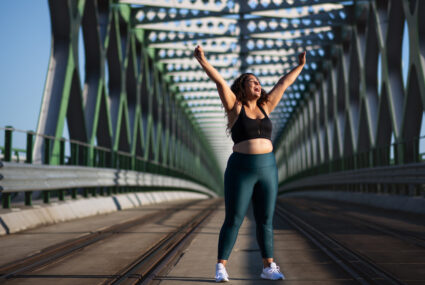
Often alignment issues are caused by the fact that the left and right lower limbs are different lengths, and as the body adjusts to this over time, it has negative effects on the lower body joints. In order to address knee pain, you need to make sure it is properly diagnosed and alignment issues are ruled out. If there are alignment problems, the main solution involves proper sneakers and custom orthotics to align the body. And luckily, you’re in the right place for that!
What you should look for in a sneaker for knee pain
Type of foot
Because your foot type can impact your knees, it’s important to look for a shoe that’s appropriate for your specific foot type. One way to determine this is the “wet foot” test, says Dr. Lubin.
“Wet the bottoms of your feet and step on a sheet of paper, making a footprint. If the wet print shows the entire bottom of your foot, it’s likely that you have a low or flat arch. This is known as overpronation. If you see about half of the middle section of your arch on the paper, you probably have arches that are medium, or more typical in height, this is a neutral foot type. And finally, if you see just the imprint of your toes, your heel, and the ball of your foot on the paper, you probably have a very high arch. This is known as supination.” Here’s a good visual if you need it.
“Each foot type has different effects on your proximal joints such as your knees, which can lead to inflammation and pain,” says Dr. Lubin. You should be targeting your own specific foot type to prevent injury and knee pain. One way to find a sneaker for your foot type is to focus on the heel. For example, for a neutral foot type and underpronater, the heel height should be symmetrical on the inside and outside.
Motion control
A “motion control” sneaker incorporates the most amount of midsole support, says Nelya Lobkova, DPM, a board-certified podiatrist at Step Up Podiatry in New York City. “When the midsole is the most rigid or supportive, it allows for the least amount of improper tilting of the heel during walking and running. Less abnormal tilting of the heel means less abnormal rotation of the knee since the mechanics start from the ground up.”
Cushioned midsole
A cushioned midsole involves a platform sole, says Dr. Lobkova. “Look for platform sneakers with adequate shock absorption or cushioning under the heel. When there is not enough shock absorption, the forces travel to the next weight bearing areas up the kinetic chain, which is the shins or the knees,” she says. If you have inadequate shock absorption in your sneakers, it commonly leads to shin splints or knee pain.
Arch stability
Sneakers for knee pain should have arch arch stability and strong structure to support the foot during impact. “The sneaker should not be able to bend in half or twist 180 degrees,” says Dr. Lubin.
Can wearing the right sneakers alleviate knee pain?
Wearing the wrong shoe can aggravate alignment issues and make knee pain worse, says Dr. Lobkova. She advises to avoid rocker bottom sneakers (sneakers with midfoot rockers such as Hoka One One—they’re great for a lot of reasons, but not for folks who experience knee pain) as they put excess pressure on the knees in order to relieve pressure from the ball of the foot. Also stay away from sneakers with very high heel-to-toe drops (above 10mm). “An elevated heel in a sneaker increases stress on the knees, thus worsening underlying alignment concerns,” she says.
Dr. Lubin agrees, saying all sneakers are not created equal. People with a neutral arch strike the floor with their heels, then while you roll towards the toes, your arch lightly collapses inward absorbing the impact. The shock of hitting the ground is dissipated to the foot and not up to the knees.
People who are overpronators have flat arches. This means that the arch of your foot stretches inward too much, and it collapses, sending the impact with the ground up the legs to the knees, which then causes inflammation. Supinators have very high arches so they don’t flex enough to provide adequate shock absorption during running or walking. This foot type generally creates extra strain on the ligament connecting your heel and toes, known as the plantar fascia causing both foot and knee pain.
Best sneakers for knee pain
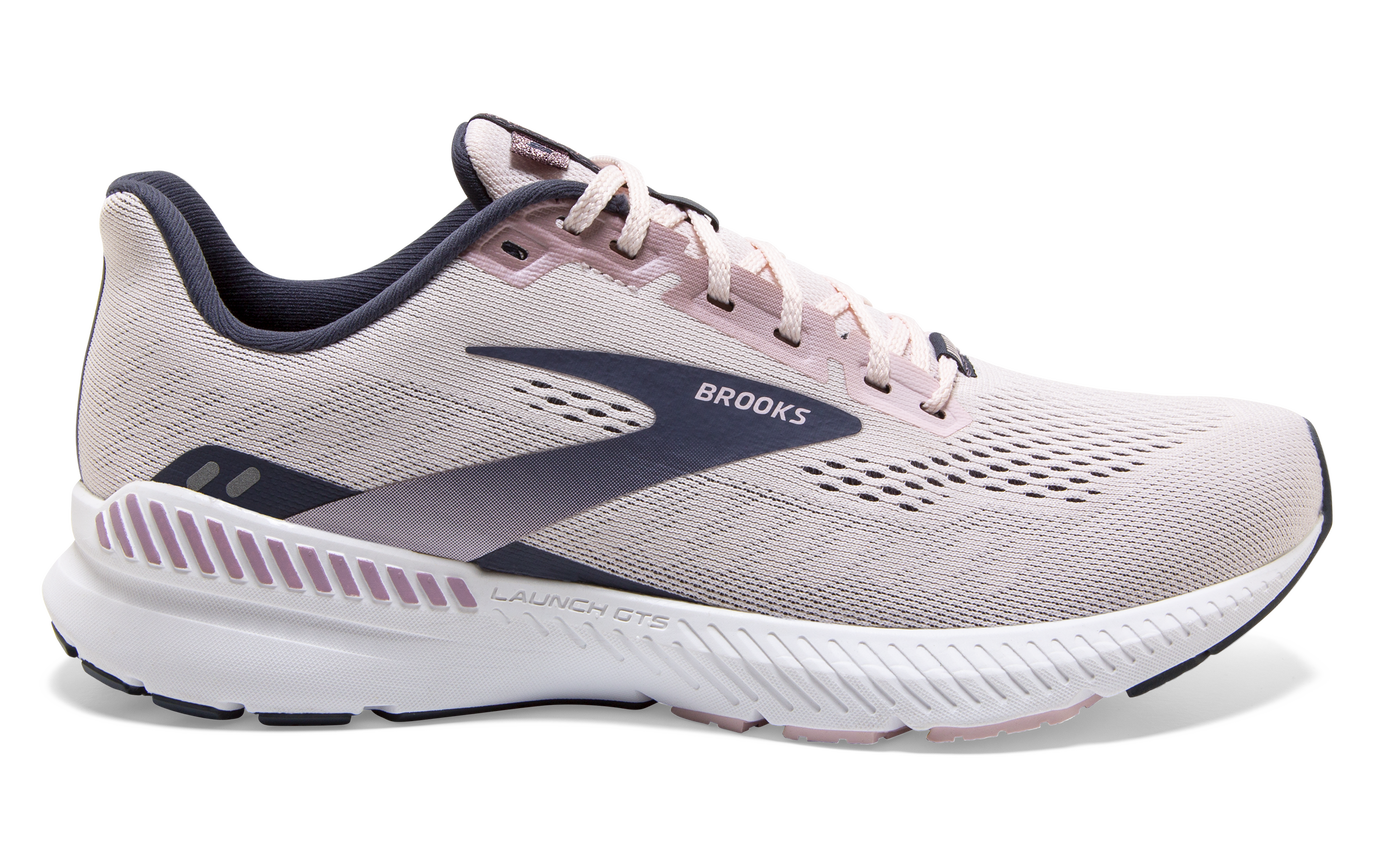
Brooks Launch GTS 8 — $70.00
This pair of Brooks has added support, such as the GuideRails technology system, which involves bumpers within the midsole around the heel to create additional stability of the heel. “The bumpers extend further on the medial side (inside of the foot) for optimal biomechanical alignment,” says Dr. Lobkova. The sole has air-injected rubber, which is more flexible and lighter than regular rubber.
Pros
- Lightweight cushion
- 10mm mid-sole drop
- Midsole support to minimize excess movement
Cons
- Not as supportive around the ankle
Colorways: Primrose and lavender

New Balance 847v4 — $109.00
The midsole cushioning of these New Balance walking shoes uses two different types of foam for cushioning. The upper is made of mesh to ensure breathability, and the soles are rubber to withstand the elements outside. The heel insert in the midsole allows for motion control, says Dr. Lobkova.
Pros
- Stability support to minimize rear-foot movement
- Midsole has two types of foam for support
- Rugged soles
- Mesh upper
Cons
- More for walking instead of running
Colorways: Black, white, blue
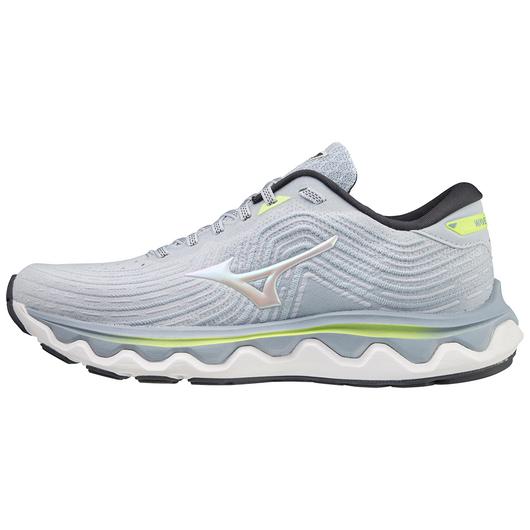
Mizuno Wave Horizon 6 — $170.00
“The patented Wave plate in the midsole acts as a stable buttress under the inside of the heel, similar to a post on the bottom of an orthotic,” says Dr. Lobkova. The foam wave is asymmetrical, which helps tilt the heel and keep it in the optimal neutral position. The upper is stretch woven, and the shoe is also made of eco-friendly materials.
Pros
- Stability support via an asymmetrical foam wave
- Breathable, woven upper
- Rubber outsole
- Responsive foam
- 8mm heel-toe drop
Cons
- Not everyone may want maximum cushioning
Colorway: Black, white, gray
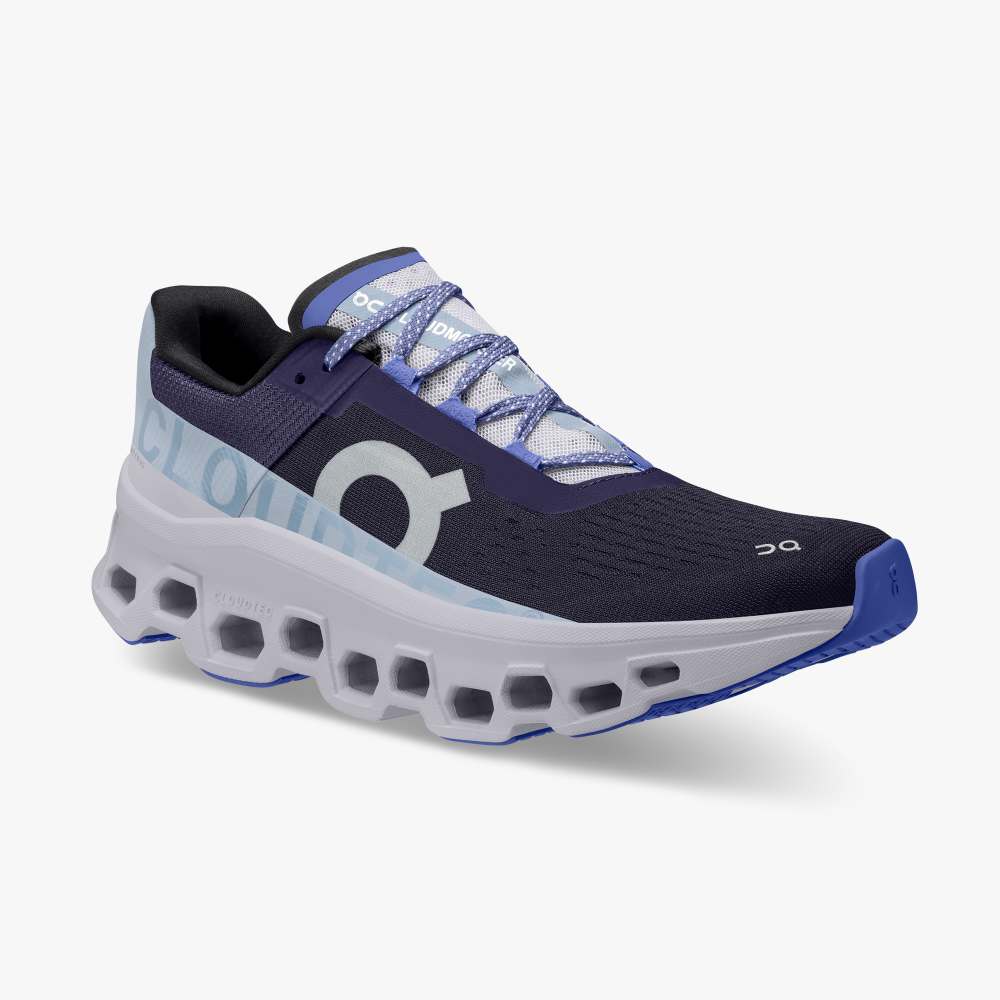
On Cloudmonster — $170.00
This pair of sneakers may make you feel like you’re walking on a cloud. It has maximum cushioning and rebound with each step, but is still lightweight to keep up with your long runs. Dr. Lubin says these are good for overpronators.
Pros
- Lightweight
- Made with recycled materials
- Lots of cushion but still responsive
- 6mm heel-toe drop
Cons
- Not everyone may want maximum cushioning
Colorways: Glacier, Acai
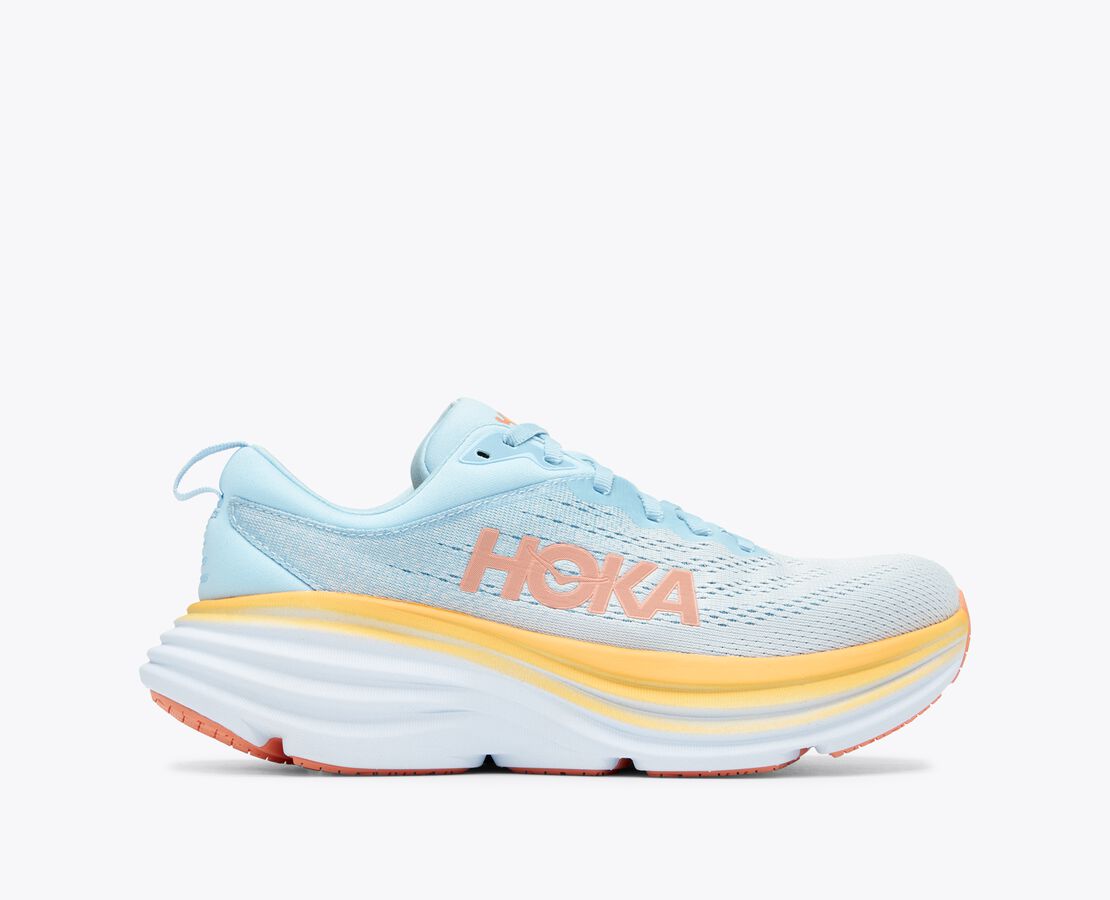
Hoka Bondi 8
Hoka sneakers are synonymous with max cushioning. The Hoka Bondi, another good option for overpronators, uses a soft, light foam to keep your steps soft and comfy. It has engineered mesh on top so your feet stay cool, and there’s a rear crash pad to help with balanced heel to forefoot transitions.
Pros
- Lightweight
- Made with recycled materials
- Lots of cushion but still responsive
- 4mm heel-toe drop
Cons
- Not everyone may want maximum cushioning
Colorways: Black, white, harbor mist, coral, summer song
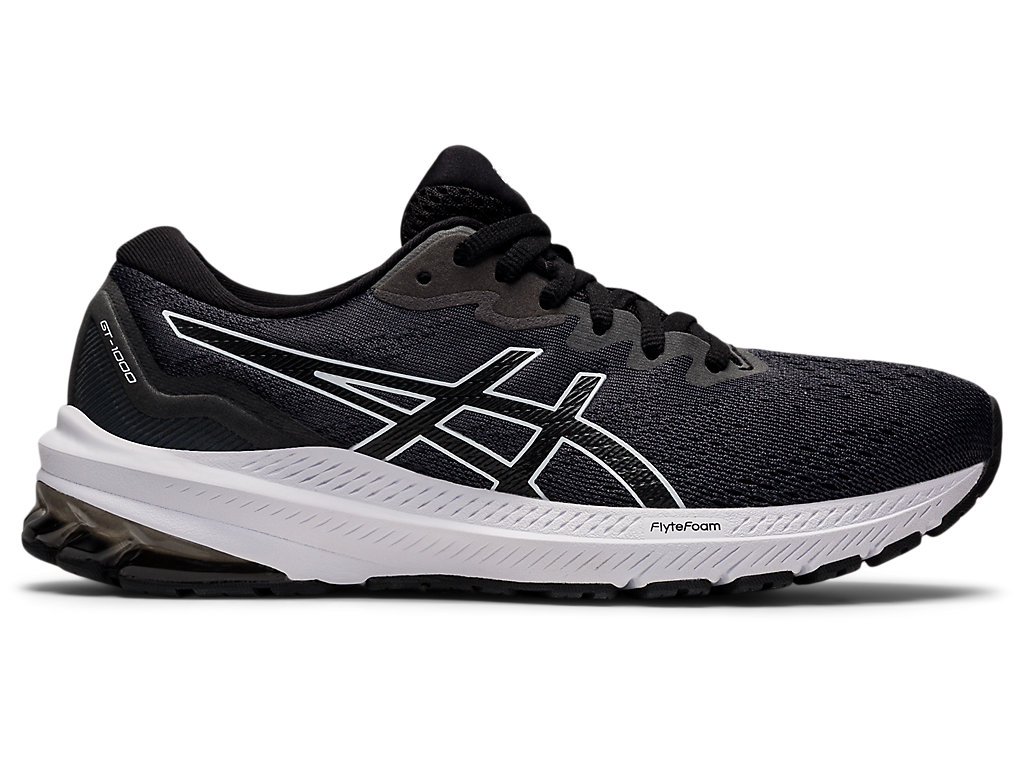
Asics GT 1000 11 — $100.00
Whether you’re running or walking, the Asics GT 1000 11 will give you softer landings under your feet. The LITETRUSS technology on the inside of the midsole helps support your feet and reduce pronation. The soles have lightweight foam, and there is gel technology in high impact areas to help with shock absorption.
Pros
- Get in high impact areas
- Neutral midsole support
- Mesh upper for breathability
- 8mm heel-toe drop
Cons
- Gel may wear out over time
Colorways: 12 colors
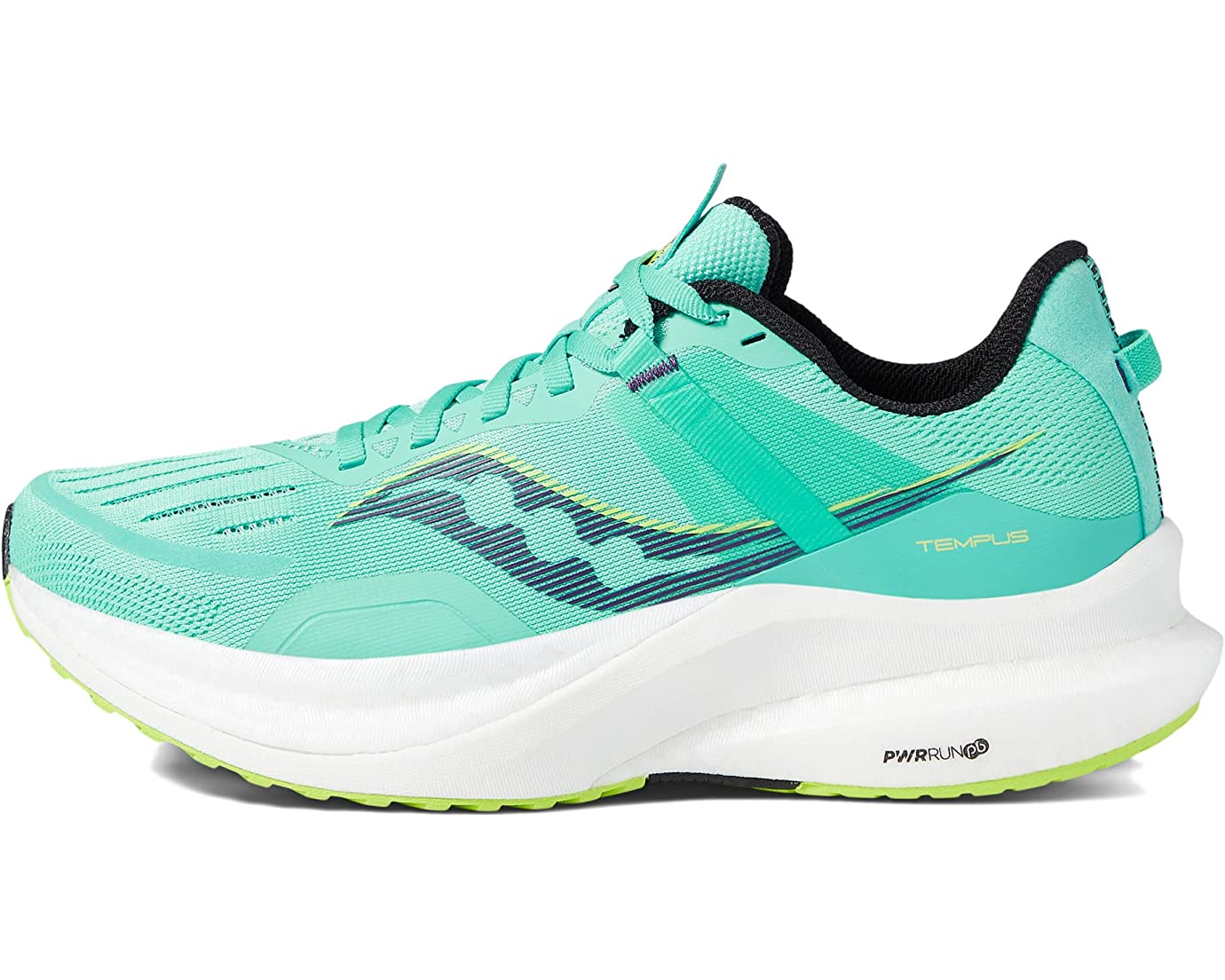
Saucony Tempus
With cushioning and midsole contouring, the Saucony Tempus hugs your feet for a supportive feel. The cushioning is lightweight and springy, letting you take each step with ease. There’s also adaptive lacing so you can make sure your shoes fit snugly on your feet, and a lightweight mesh upper.
Pros
- Lightweight and responsive
- Padded collar and tongue for comfort
- Midsole support
- 8mm heel-toe drop
Cons
- Not everyone may want maximum cushioning
Colorways: Gray, black, orange, mint, yellow
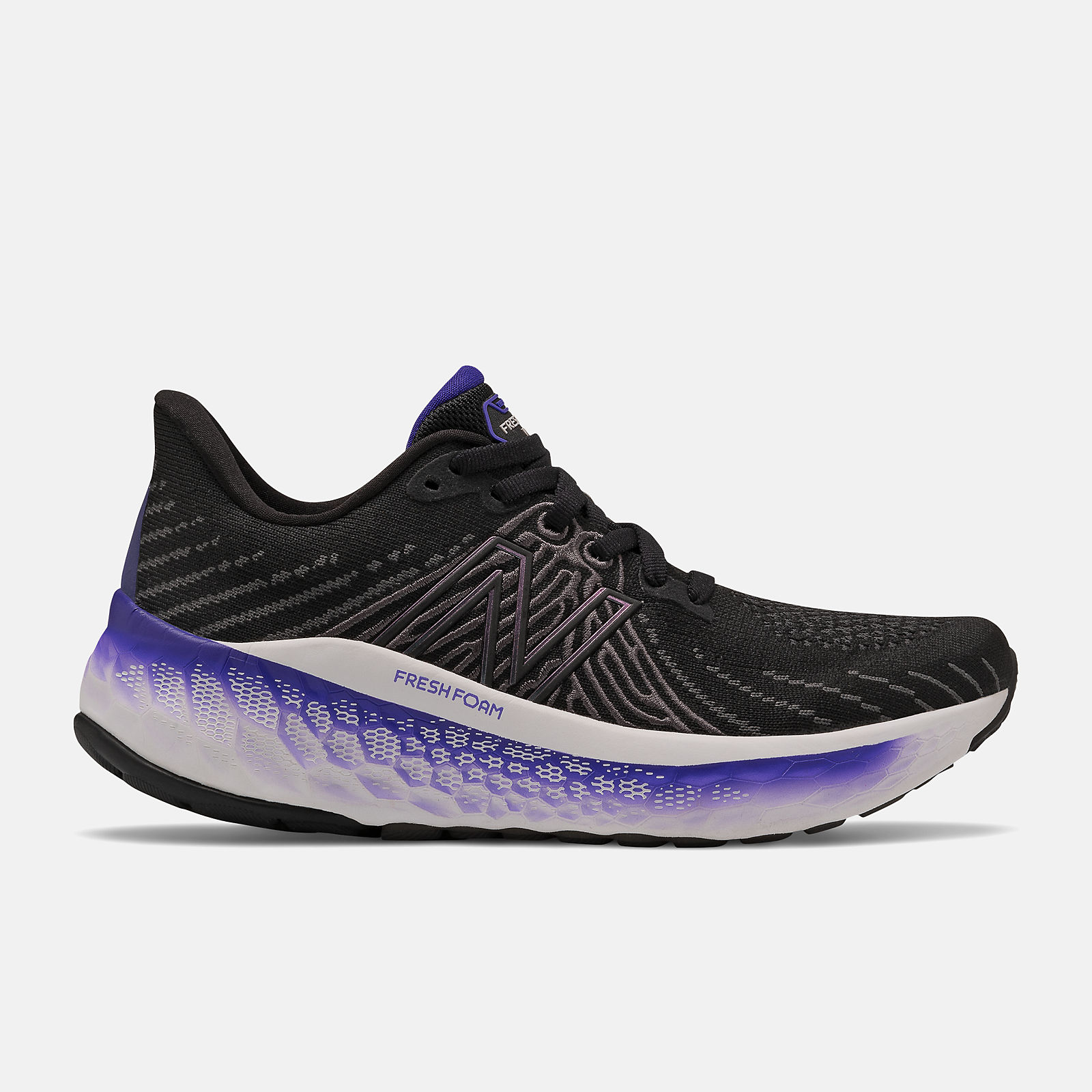
New Balance Fresh Foam X Vongo v5 — $150.00
The New Balance Fresh Foam has a number of features that all help with stability to control pronation: midsole cushioning, a medial post, a 8mm drop, and lightweight cushioning. The upper is hypoknit with embroidery for style, support, and breathability.
Pros
- Lightweight and responsive
- Padded collar and tongue for comfort
- Midsole support
- 8mm heel-toe drop
Cons
- Some reviewers say it takes time to get used to the insole
Colorways: Black
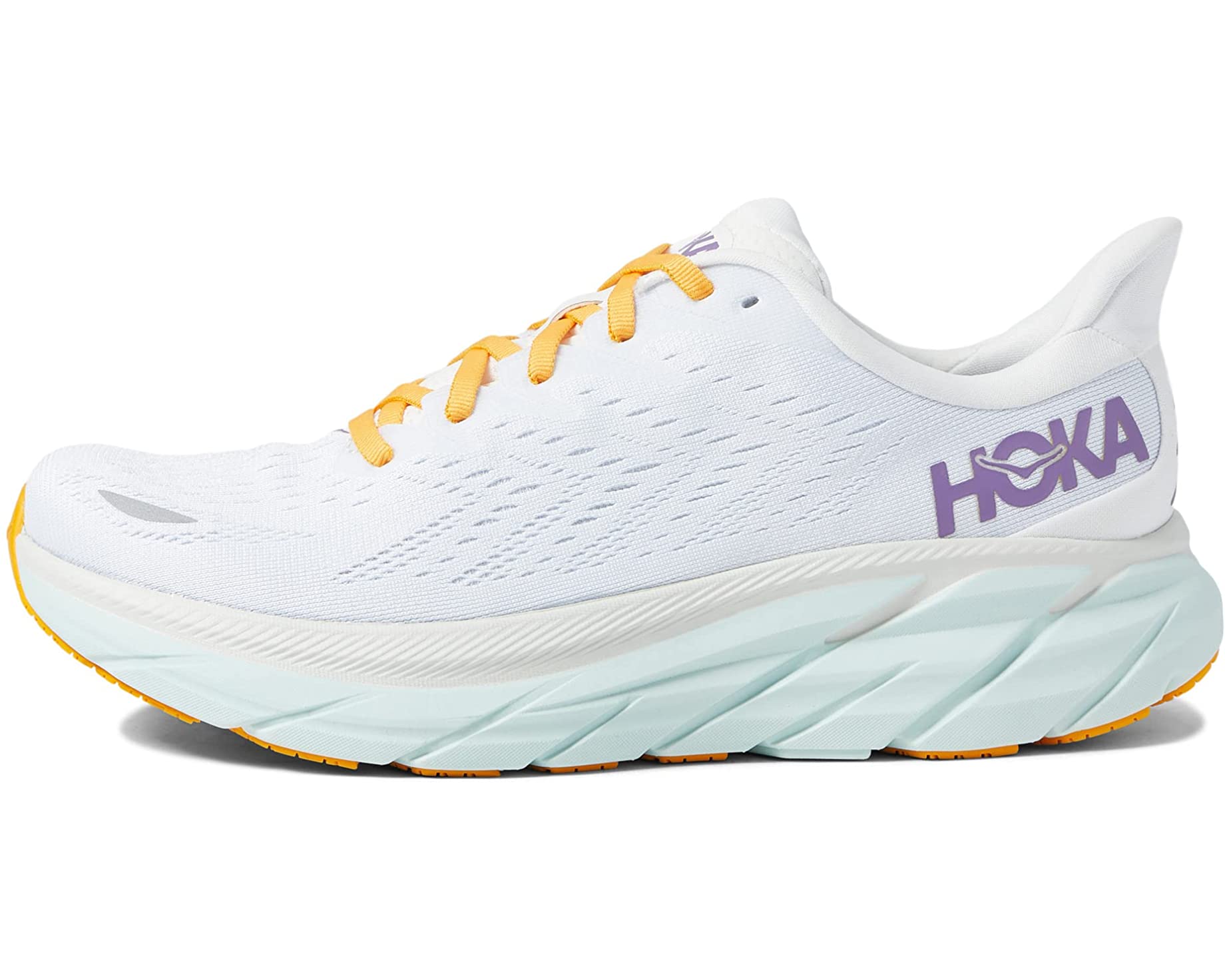
Hoka Clifton 8 — $140.00
With a responsive midsole and the American Podiatric Medical Association (APMA) Seal of Acceptance, you know the Hoka Clifton sneakers are going to make your feet (and knees) feel better. The upper is mesh for breathability, and the heel crash pad helps cushion each step. The sneakers also have balanced cushioning that’s ideal for neutral feet, and an extended achilles pull tab that makes putting them on a little easier.
Pros
- Molded midsole for support
- Extended heel crash pad
- Comes in regular or wide
- 5mm heel-toe drop
Cons
- Not everyone may want maximum cushioning
Colorways: 11 colors
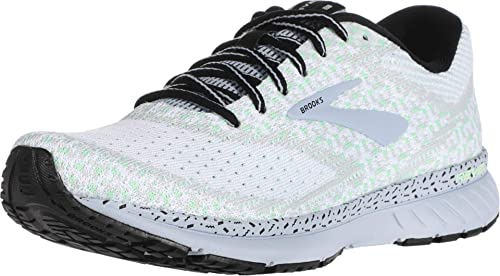
Brooks Ariel ’20 — $160.00
Stable and soft, the Brooks Ariel ’20 has smart support with the GuideRails technology to help keep extra movement under control. This helps your knees, hips, and feet so you can run with less aches and pains. The engineered mesh upper keeps air flowing while you’re moving, and the shoe has a wide toebox to give your toes room to wiggle.
Pros
- Smart support to minimize excess movement
- Soft cushion
- Comes in regular, wide, or extra wide
- 12mm heel-toe drop
Cons
- Boxier look
Colorways: Black, oyster, alloy
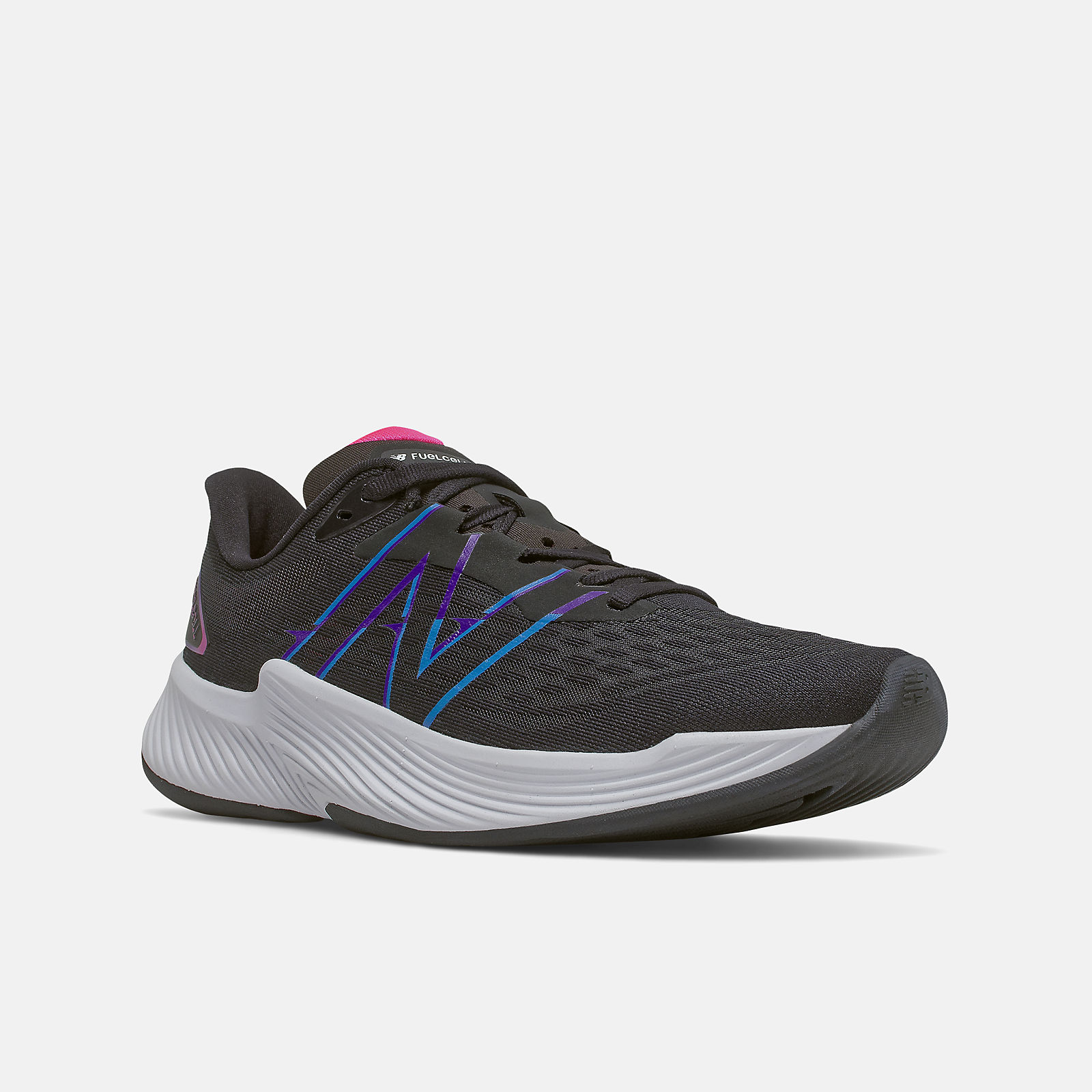
New Balance FuelCell Prism v2 — $130.00
If you prefer lightweight support, consider the New Balance FuelCell Prism v2. There’s a medial post for stability, and a precision engineered midsole for cushion, and foam to help you rebound after each stride or step. The synthetic upper is designed to be light and breathable.
Pros
- Midsole support
- Lightweight stability
- Comes in regular or wide
- 6mm heel-toe drop
Cons
- May not be as comfortable for longer distances
Colorways: Black
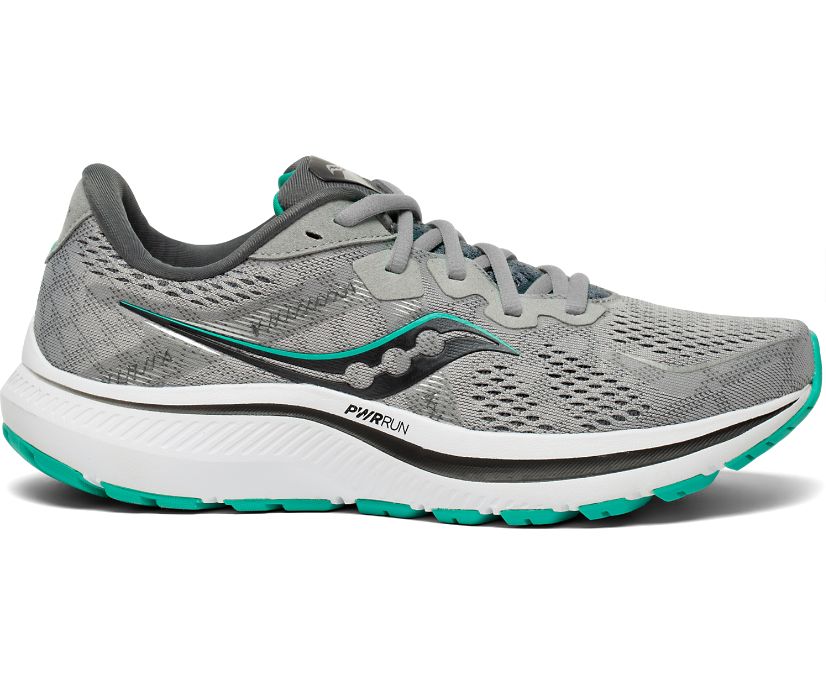
Saucony Omni 20 — $107.00
The Saucony Omni 20 is the 20th version of this sneaker, and it’s a classic for a reason. The shoe is stable yet flexible, so your feet get support stride after stride. It’s partially made of recycled materials and has an extended medial post to help with body alignment to help reduce pain. There’s stable cushioning and engineered mesh to help with breathability.
Pros
- Lightweight
- Stable and responsive cushioning
- Comes in regular or wide
- 8mm heel-toe drop
Cons
- Not everyone may want maximum cushioning
Colorways: 11 colors

Nike Air Zoom Structure 24 — $104.00
You’ll be able to hit mile after mile with support, thanks to the responsive cushioning and firm midsole of this pair of Nikes. The soles have grooves for both flexibility and stability, and there is a crash pad under the heel to help you efficiently transfer from your heels to your toes. A cushioned tongue helps with comfort and a mesh upper helps with cooling.
Pros
- Responsive cushioning
- Crash pad under the heel
- 8mm heel-toe drop
Cons
- Bulkier design
Colorways: Black



